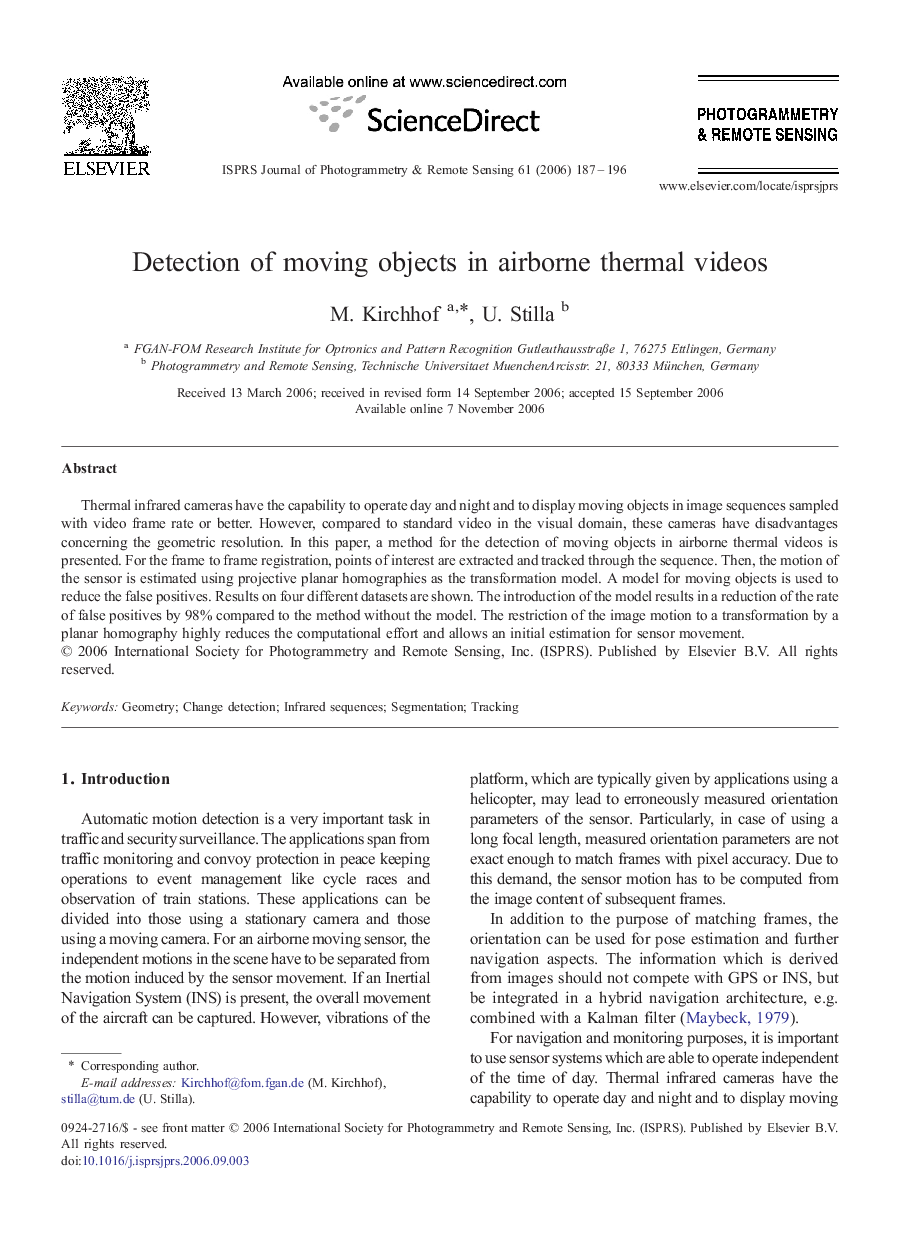| Article ID | Journal | Published Year | Pages | File Type |
|---|---|---|---|---|
| 556169 | ISPRS Journal of Photogrammetry and Remote Sensing | 2006 | 10 Pages |
Thermal infrared cameras have the capability to operate day and night and to display moving objects in image sequences sampled with video frame rate or better. However, compared to standard video in the visual domain, these cameras have disadvantages concerning the geometric resolution. In this paper, a method for the detection of moving objects in airborne thermal videos is presented. For the frame to frame registration, points of interest are extracted and tracked through the sequence. Then, the motion of the sensor is estimated using projective planar homographies as the transformation model. A model for moving objects is used to reduce the false positives. Results on four different datasets are shown. The introduction of the model results in a reduction of the rate of false positives by 98% compared to the method without the model. The restriction of the image motion to a transformation by a planar homography highly reduces the computational effort and allows an initial estimation for sensor movement.
